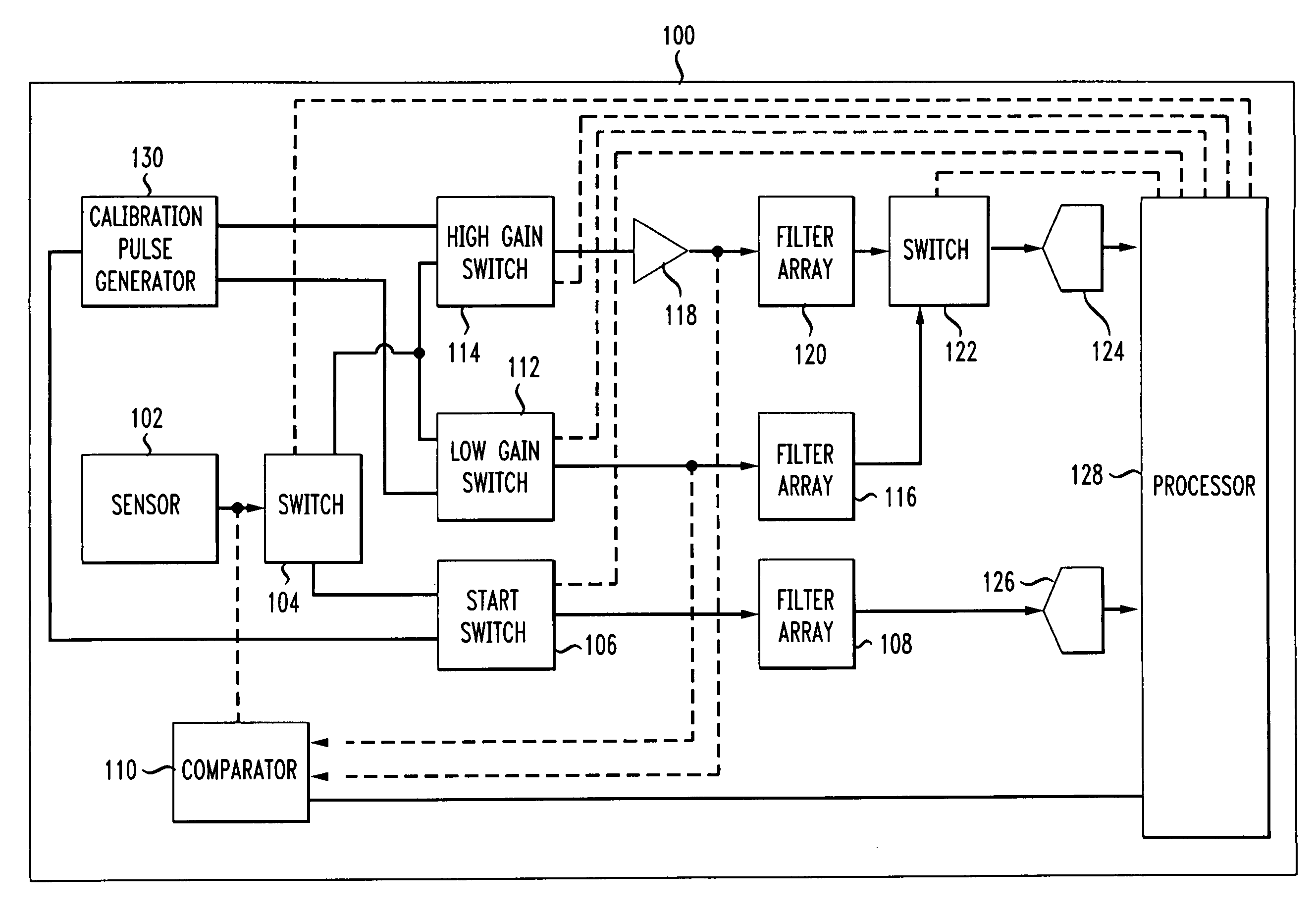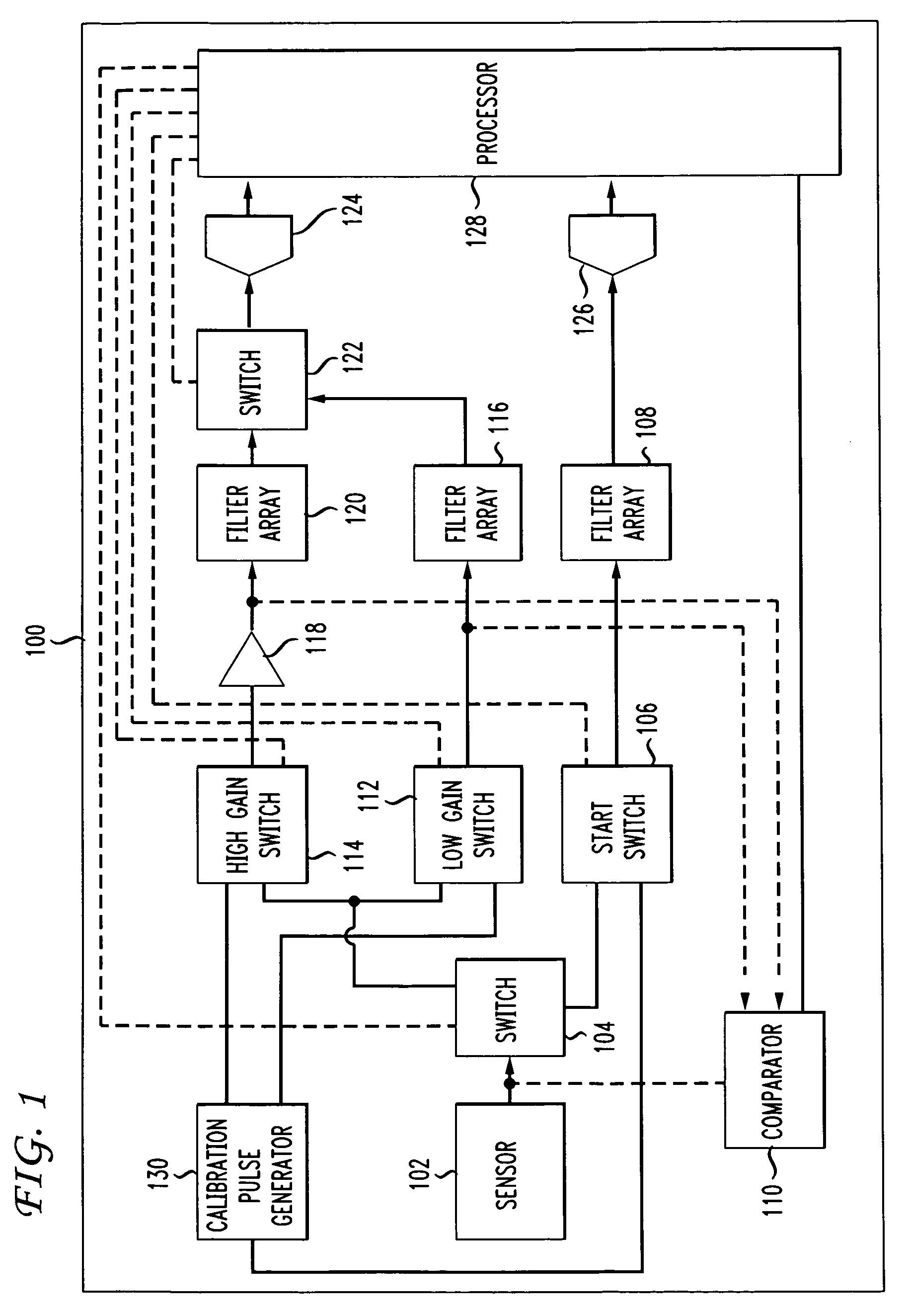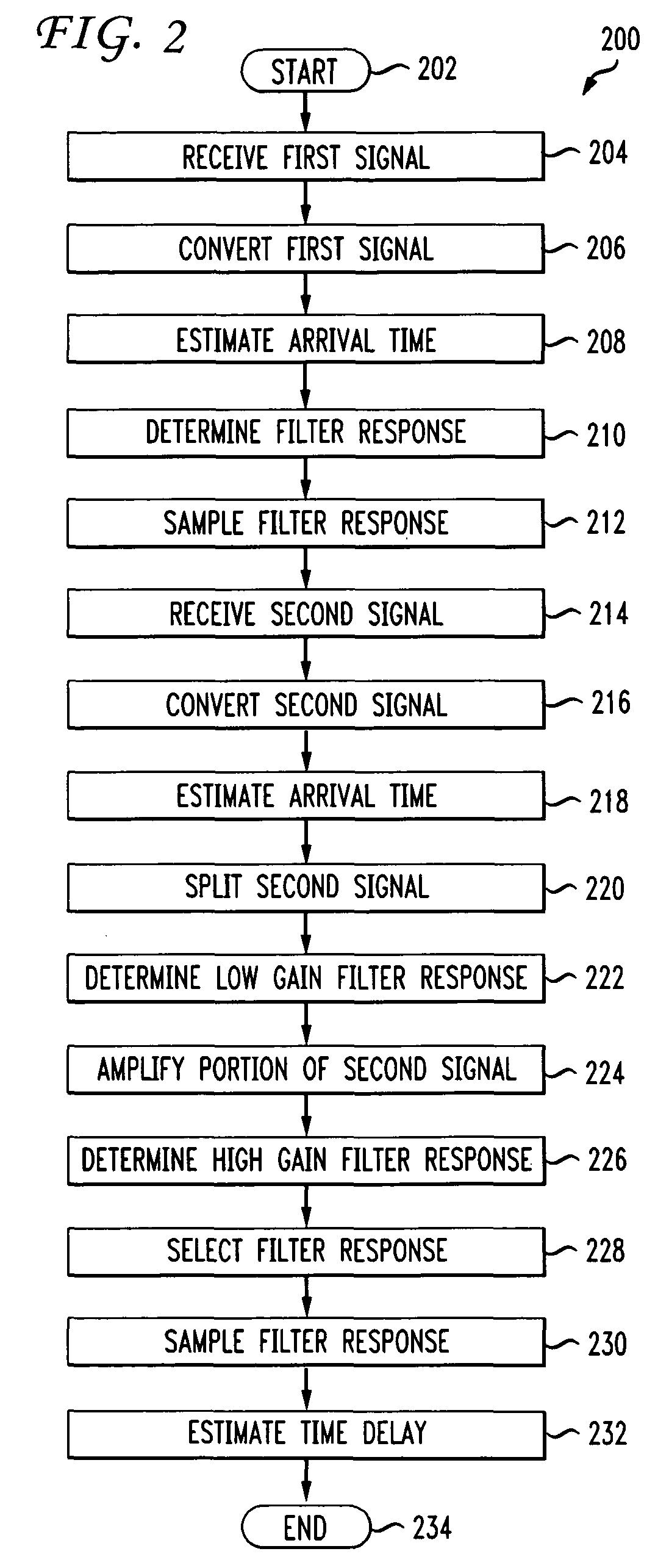Time delay estimation
a time delay estimation and time interval technology, applied in the field of time delay estimation, can solve the problems of insufficient accuracy, prohibitively expensive time delay estimation methods, and inability to accurately detect such small time intervals,
- Summary
- Abstract
- Description
- Claims
- Application Information
AI Technical Summary
Benefits of technology
Problems solved by technology
Method used
Image
Examples
Embodiment Construction
[0020]At least one embodiment of the present invention provides techniques for measuring the time between two optical pulses (e.g., a start pulse and a stop pulse) that relate to the transit time between a measurement instrument and a distant object. Of course, this may be extended to measure or estimate the time between any two events using the inventive techniques described herein. When applied to laser scanning, optical pulses are converted into an electrical signal to enable an electronic device to make an estimate of the time differential.
[0021]FIG. 1 depicts a time delay estimation circuit 100 according to an embodiment of the present invention. Though described herein as a general circuit with specific reference to components of that circuit, one of skill in the art will recognize that the functions of time delay estimation circuit may be performed by any appropriate combination of electrical and / or electromechanical devices.
[0022]Circuit 100 includes sensor 102, which receiv...
PUM
 Login to View More
Login to View More Abstract
Description
Claims
Application Information
 Login to View More
Login to View More - R&D
- Intellectual Property
- Life Sciences
- Materials
- Tech Scout
- Unparalleled Data Quality
- Higher Quality Content
- 60% Fewer Hallucinations
Browse by: Latest US Patents, China's latest patents, Technical Efficacy Thesaurus, Application Domain, Technology Topic, Popular Technical Reports.
© 2025 PatSnap. All rights reserved.Legal|Privacy policy|Modern Slavery Act Transparency Statement|Sitemap|About US| Contact US: help@patsnap.com



